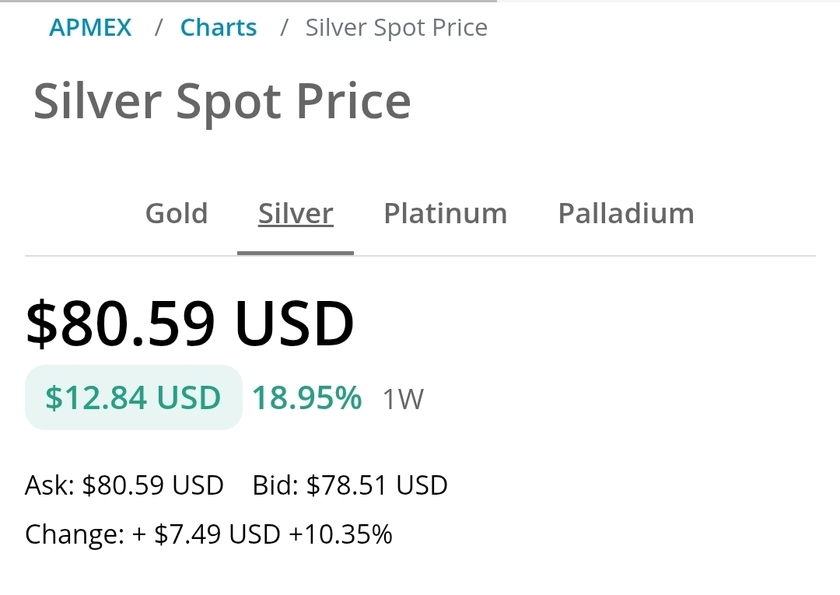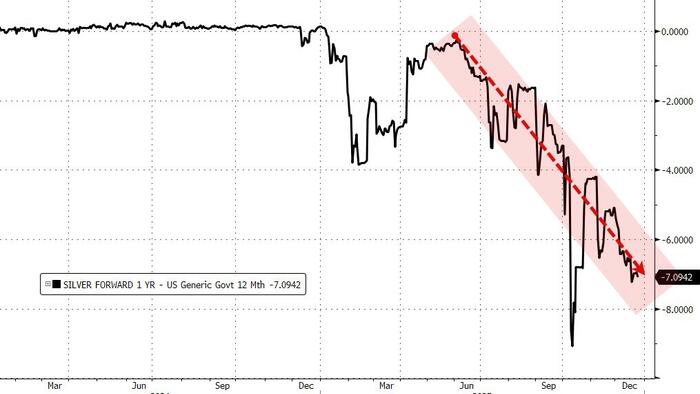MONEY POX – EXECUTIVE ORDER 14067 W/ ALAN JOHNSON
The CDC says monkey pox can spread through direct contact or by touching objects like money. If a pathogen could be passed during the exchange of physical currency, there would have to be some executive order or a law that would go into effect where cash would be worthless. Well, we may see this happen sometime in December of 2022 when Executive Order 14067 (Ensuring Responsible Development of Digital Assets) is supposed to go into effect. These Central Bank Digital Currencies will create a need for a ‘convenient’ cashless society indoctrination. Tonight on Ground Zero, Clyde Lewis talks with financial analyst, Alan Johnson about MONEY POX – EXECUTIVE ORDER 14067.
The CDC says monkey pox can spread through direct contact or by touching objects like money. If a pathogen could be passed during the exchange of physical currency, there would have to be some executive order or a law that would go into effect where cash would be worthless. Well, we may see this happen sometime in December of 2022 when Executive Order 14067 (Ensuring Responsible Development of Digital Assets) is supposed to go into effect. These Central Bank Digital Currencies will create a need for a ‘convenient’ cashless society indoctrination. Tonight on Ground Zero, Clyde Lewis talks with financial analyst, Alan Johnson about MONEY POX – EXECUTIVE ORDER 14067.
SHOW PODCAST:
8/11/22: MONEY POX – EXECUTIVE ORDER 14067 W/ ALAN JOHNSON
SHOW TRANSCRIPT:
I wondered exactly how long it would take before the paranoia of Monkey Pox would set in and how the authorities would claim that touching anything from thrift store clothing to cash money can spread the disease.
They say that it is low — but warn people about shopping, touching shopping carts that may be infected, buying products that may have been touched by someone, or even touching money that may have been handled by the infected.
This is not a panic situation yet — but if it ever became one it would certainly be one way of creating the cashless society and continue the scarcity agenda that they have implemented.
The CDC says monkeypox can spread through direct contact or by touching objects, fabrics, and surfaces used by someone who is infected. UNC Health Infectious Disease Expert Dr. David Wohl said that though that can occur, the risk is low.
In a statement- Whol said “I don’t think I would worry too much about these very casual encounters with inanimate objects. You’re not going to catch this at a restaurant. You’re not going to catch this off of a park bench. Trying on clothes I would say that’s pretty unlikely. You would have to have somebody, who right before you tried on clothes, who had lesions with monkeypox virus.”
Chances are low– but of course that hasn’t stopped the power elite from using disease as an excuse to implement another new normal where everything is suspected of carrying a virus,
Back in October of 2020, we reported the tabletop drill called Dark Winter where this very scenario was carried out in a mock gain of function exercise.
Dark Winter and Atlantic Storm were both aligned in predicting the release of a biological pathogen during a massive winter storm. The pathogen was spread on Black Friday during a major winter storm on the Atlantic Coast.
The pathogens spread was traced to the exchange of money and the contact that people had while shopping.
If a pathogen could be passed during the exchange of money, there would have to be some executive order or some law that would go into effect where cash would be worthless. It would certainly be revolutionary.
Well, we may see this happen sometime in December of 2022.
This is when Executive Order 14067 is supposed to go into effect.
Executive Order 14067, titled “Ensuring Responsible Development of Digital Assets,” includes developing policy plans and the organization of federal regulators. “Any future dollar payment system should be designed in a way that is consistent with United States priorities … and democratic values, including privacy protections, and that ensures the global financial system has appropriate transparency connectivity, and platform and architecture interoperability or transferability, as appropriate.”
The International Monetary Fund said in a blog released last month that the creation of Central Bank Digital Currencies must move forward quickly if they are wishing to implement their 2030 agenda.
I don’t know if Monkey Pox will pose a valid excuse to move on the executive order — but economists say that this is very dangerous and reckless move.
Jim Rickards, an economist, investor and former CIA official is calling it a step toward the end of cash, the greenback, in circulation since the founding fathers.
The new “digital tokens” can be “turned off” if the government doesn’t like what you are doing. Rickards has four decades of experience on Wall Street.
He also exposed the supposed singular event called C-Day, which according to him, will take place on Dec. 13, 2022, and will disrupt the traditional financial systems in the U.S.
C-Day is the day set aside to begun the process of creating Central Bank Digital Currencies and carrying out the Executive Order 14067.
Thanks to Section 4 of Biden’s Executive Order 14067, calling for urgent research into developing the digital dollar, We may see the U.S. dollar, the standard of the world since 1792 replaced by a new currency, the digital dollar.
Executive Order 14067 was signed by Joe Biden on March 09, 2022 in case you doubt its existence.
The order lays out a series of Cashless society policy statements, such as “we must protect consumers, investors, and businesses in the United States” and “we must support technological advances that promote responsible development and use of digital assets.”
Cash and money and your ability to hang on to untraceable assets is going to become more difficult.
Money is fundamental to an economy. How it comes into existence, how much of it there is in circulation relative to how much is required to clear the markets of goods and services, how interest rates are established and how money is taxed determine the winners and losers in an economy.
In the economy that we have created all money is debt. All debt must earn interest, otherwise it is not debt. This is because we have chosen to have a fractional reserve banking system and a central bank that uses its monopoly power to set interest rates without regard to market conditions.
Economic rent is the profit one earns by simply owning something. Banks especially central banks like the Federal Reserve extract economic rent from the monopolistic privilege of creating money from nothing. In this system it is a tautology that total savings equals total debt since savings and debt are the same thing.
From this we can infer that the total amount of money equals the total amount of savings equals the total amount of debt and the terms savings, debt and money are synonymous.
The US dollar that was declared as legal tender by government decree, with the symbol of the Eye of Providence watching over humanity began to circulate across the nation. Later, through the creation of the Federal Reserve in 1913, private corporations took the power to create money away from the government.
Central banks have become the overlord to remake the world according to its own image. Economists, with the idea of unlimited growth and the concept of gross domestic product (GDP), began their evangelism to promote a materialistic view of the world.
The pandemic was successful in doing severe economic damage that has triggered the breakdown of the system that signals a dire need for change. As the old system is getting dismantled and global leaders jump in to fix the problems.
In the globalized world, dependency on current systems is enforced almost universally. Ironically, the very recognition of our dependency was evident during COVID-19.
If the world is scared enough, they will do anything to save themselves – even give up their sovereignty their independence even their cash.
Have we figured out that we need to work on trying to make ourselves independent of the controllers and the way they manufacture scarcity?
Ours is a truly complex world — with interlocking systems of finance and debt, globalized supply chains for commodities and products, highly specialized social roles and professions, and multiple technologies that tightly interface with and depend upon one another. For people living in modern societies, there is virtually no escape from dependency — technology dependency, food dependency, oil dependency — you name it.
These systems limit our autonomy, our choices, our development, and our authentic engagement with others and the world.
So what is this dependency that is enforced upon us, and who is doing the enforcing?
Virtually all of us are heavily dependent on earning wages as a means to provide ourselves and our loved ones with what we need to live.
Debt also enforces subservience and dependence. Anyone who has struggled to service credit card debt or make a regular car or house payment knows this. When you’re in debt, your time is not your own. You must sell your time to a job – or some other method of getting cash or digits in your back ledger.
Debt is also the very currency of our economic system. The money that we struggle to earn comes into existence through debt. Commercial banks create money out of nothing when they credit the account of an individual or business with borrowed money.
Only a small portion of the lent money came to the bank through deposits. Without debt, money would not exist in its current form. And so, as we create the substance that sustains us in the globalized, industrial world, we simultaneously create the conditions for our own enslavement.
It’s important to understand, though, that money can be created in other ways besides through debt. That just isn’t done now in the current economic system. Having the power to create money out of nothing and the right to confiscate real property (collateral) in the case of a debt default gives banks an incredible amount of power in modern economies and societies.
This is why we have been warning time and again about the dangers of a cashless society, and money being kept form you for bad behavior– like speaking up against the government or some other infraction. There is always a possibility that your cashless digits could inly be spent on what the government wants or that it has to be spent within a certain time.
The point I am making is that most of us are almost entirely dependent on the money system for our very survival, and this dependence has proven to be extremely profitable for industries of all kinds.
But what would happen if one day we get the word that money may be transmitting a virus like Polio or Monkey Pox — then what?
How would you survive without some form of exchange– this is why at this time holding metal my a be a way to at least have something that can be converted to whatever currency the banks wish to recognize.
I believe learning to recognize enforced dependency as an organizing principle in the modern, globalized world is well worth it because this knowledge truly is power. And I think most of us would agree that we need the power to make big changes. Understanding enforced dependency is a powerful starting point for discussion about how the reset sells you on the idea of owning nothing and being happy.
This argument over recession and inflation continues to aggravate the great divide in our nation. It can all be traced to dependency.
The divide-and-conquer strategies of many leaders, strategies that divert our attention to casting blame on other victims of systemic problems instead of paying attention to the systemic problems themselves.
Knowing that forces beyond our control have left millions with very limited choices in attempting to better their lives provides fertile ground in which to cultivate empathy and solidarity rather than hatred and blame as we move through difficult times that promise to prove increasingly challenging.
In a truly globalized world like the one in which we live, there really is nowhere to run or hide that will allow us to escape all of the ravages of rapidly converging crises. And so, we must face each other. In crisis, will we face each other as enemies or as partners?
The global economy upon which most of us depend for our very survival isn’t sustainable. It’s proving to be less and less reliable in satisfying our needs, and the system is sure to become increasingly unstable as oil prices are unpredictable and inflation is out of control.
Now we have to realize that without the approval of Congress, the states, or the American people Biden signed into law Executive Order 14067.
This sets the stage for Legal government surveillance of all US citizens, total control over your bank accounts and purchases, and the ability to silence all dissenting voices for good.
So I guess we need to realize that before they come for your guns – they are going to come for your money. They will certainly have many excuses on tap to convince people to abide by this new order.
Call it a conspiracy theory all you want, but there is a very dark, heavy agenda at play.
It has all been a slow and very careful form of indoctrination. It has been a virus fear indoctrination & misplaced sense of responsibility… it has all connected to the climate fear indoctrination, manipulation & guilt-bashing and the accusations of denial which now creates a need for a ‘convenient’ cashless society indoctrination.
Look how they utilized our herd mentality against us. Knowing we’d rather lose our freedoms & integrity than our social status, our safety and our ability to buy sell or trade without the surveillance of the beast.
What a test run to see what they can get away with before we make a stand.
Hijacking our compassion and common sense with an endless stream of Trojan horses for us to jump all over whenever they flick the switch. Laughing at us whilst we literally cheer on our own demise, in our blind eagerness to ‘do the right thing.’
Oh believe me – cashing in those worthless dollars for equally worthless Central Bank Digital Currencies will be the right thing as long as someone as trustworthy as Bill gates sharpens his smile and says it is all for the best.
The gullible will be all to willing to enforce the new currency.
They’re bulldozing their way in because we’re letting them. Still trusting & obeying those we claim to despise & distrust.
Waiting. Ignoring. Denying. Pretending. Allowing. But never preparing, saving, investing, all because you are told it will all be okay.
It is the new ritual that precedes the Great Reset.
When they tell you that you will own nothing and be happy – just remember that the cheese in a mousetrap is never free.
https://groundzeromedia.org/8-11-22-money-pox-executive-order-14067-w-alan-johnson/





























